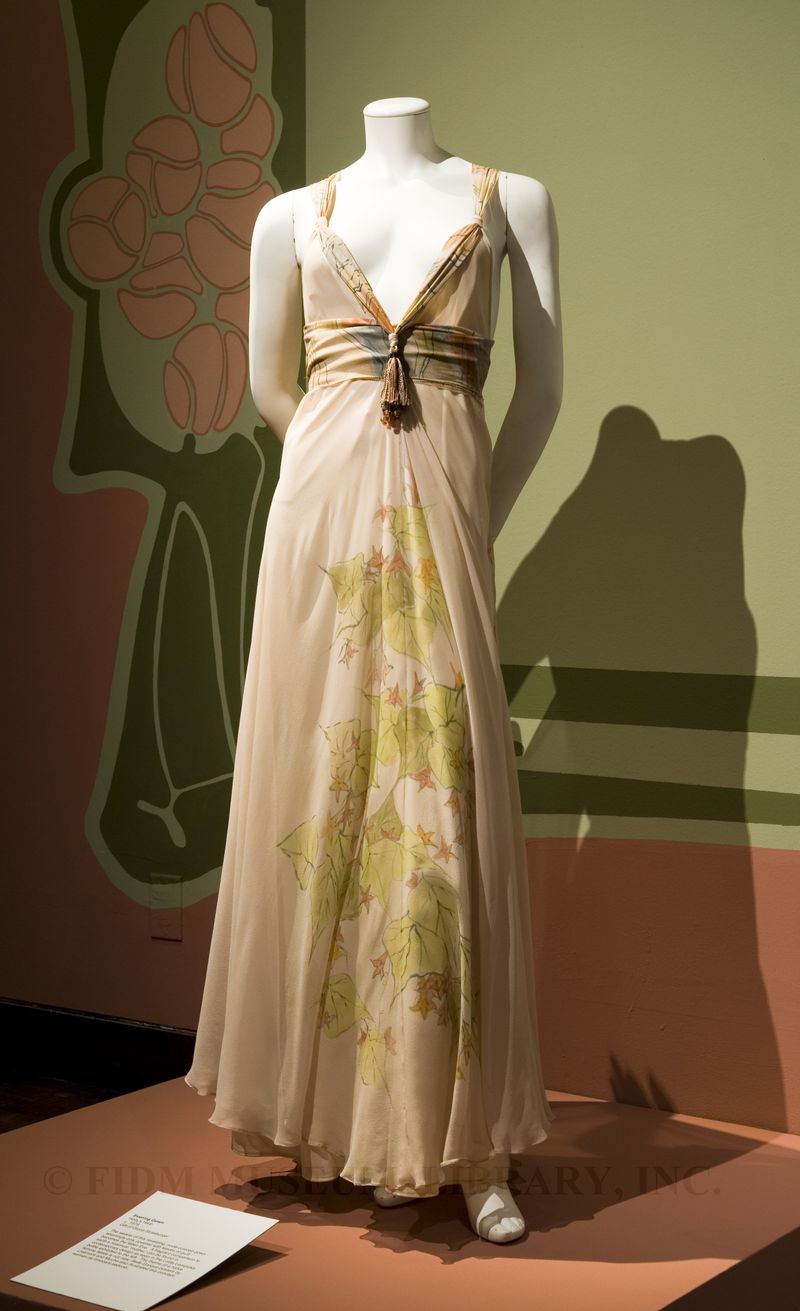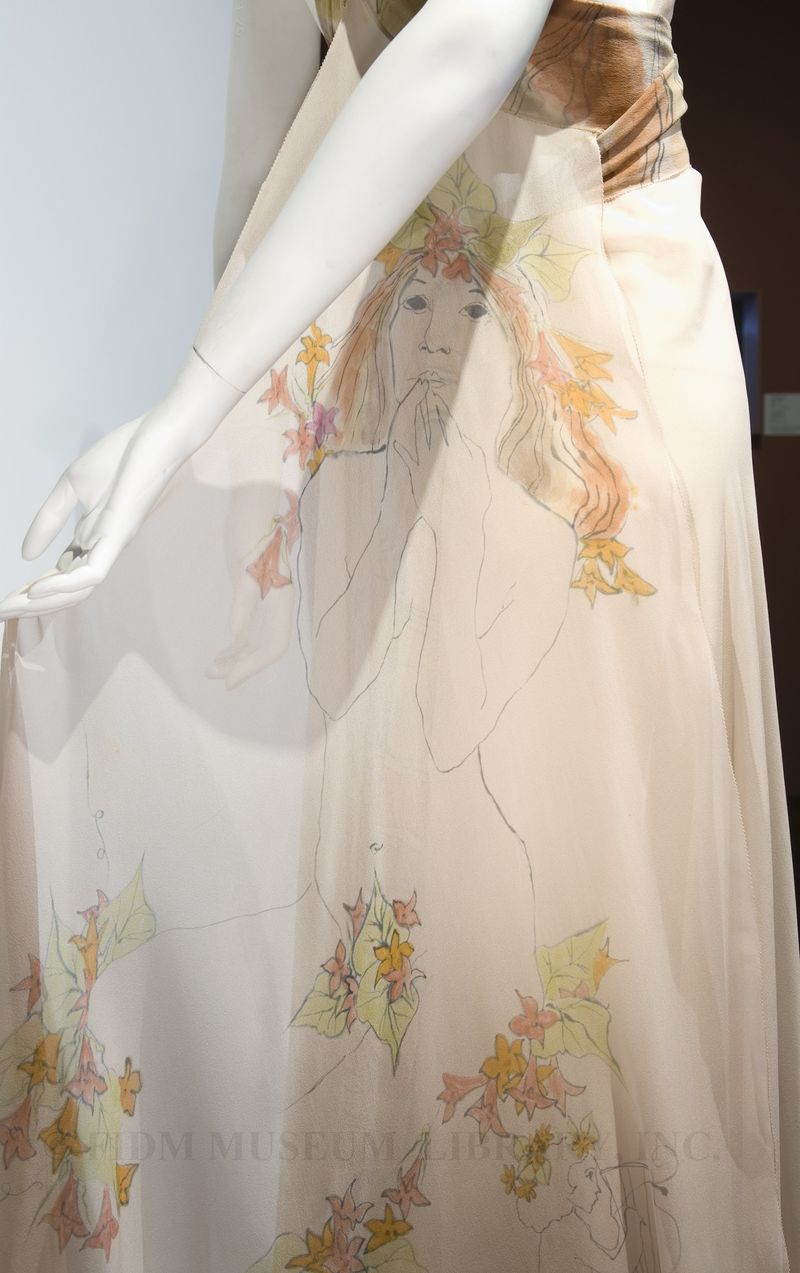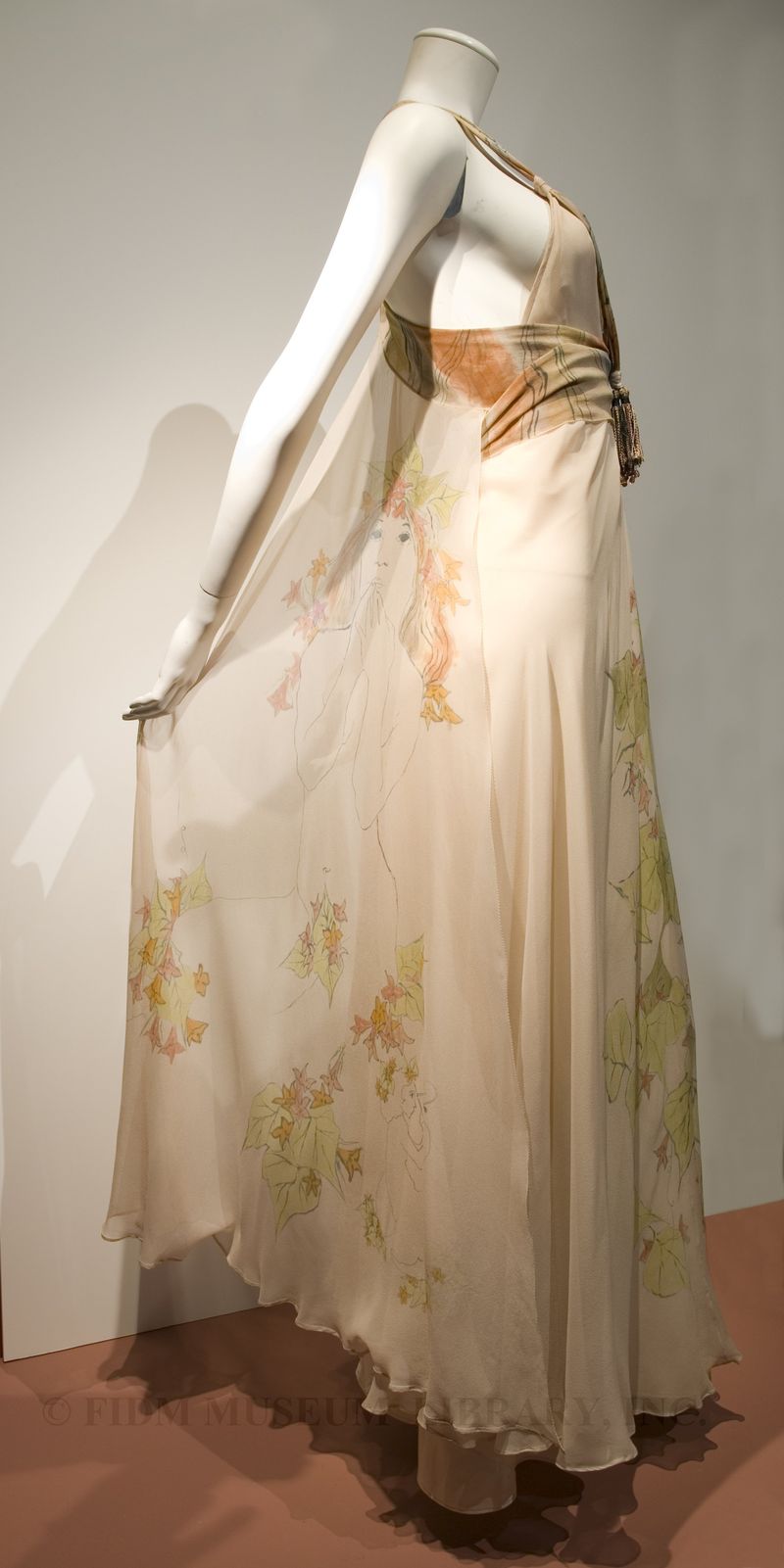The FIDM Museum blog will be on hiatus through early January 2015. In the meantime, enjoy weekly posts from the archives. To keep up with our current projects, find us on Facebook and Twitter, which will be updated regularly during the blog hiatus. Holly's Harp hand-painted chiffon evening dress was first shared in November 2011.
 Evening gown
Evening gown
Holly's Harp
1974
Gift of Gloria Strasburger
99c.059.09
The sinuous lines of Holly Harp's evening wear hearken back to the form-fitting, bias cut gowns of the 1930s. Her career began in the hippie milieu of late 1960s Los Angeles. Working from her eponymous shop, Harp created custom clothing from a hodge-podge of new and old materials. Harp's aesthetic soon shifted, moving towards what she called "grown-up glamour clothes."1 Discarding the feathers and fringe she favored in the late '60s, Harp began working with more refined materials, including silk chiffon, panne velvet and silk jersey. Using these textiles enabled Harp to produce a range of romantic, body-conscious evening wear, including the hand-painted dress pictured above. This bias-cut, blue evening dress provides another example of Holly Harp's interest in glamour and romanticism.
Harp once admitted that she was a "junk-store-aholic" who couldn't pass up an opportunity to visit a second-hand shop.2 These excursions to the past probably inspired the 1930s feel of her designs. Other designers of this era also looked to the past for design inspiration. Theadora Van Runkle's 1930s inspired costumes for the 1967 film Bonnie and Clyde generated tremendous interest in 1930s fashions. Yves Saint Laurent's 1971 collection Homage aux Années 40s was entirely based on fashion of the 1940s, including the broad shoulders, turbans and platform shoes popular during the decade. Vogue editor Hamish Bowles discusses Saint Laurent's Homage aux Années 40s in this short video. The slim silhouettes of Ossie Clark's designs are strikingly similar to 1930s styles. Except for the midriff cutout, this 1970 black crepe dress (designed either by Clark or his business partner Alice Pollock) could easily be mistaken for something designed in the 1930s.
With its flowing skirt and revealing bodice, our pink chiffon Holly's Harp is reminiscent of our late-1930s Madeline Vionnet evening gown. Instead of focusing decorative attention of the bodice, Harp chose to cover the skirt with a cascade of hand-painted flowers and leaves. Turning to the back of the dress, floating panels attached to the criss-cross shoulder straps portray a nude women adorned with a crown of flowers. Look to the lower right corner of the image and you'll also notice a harp player, a play on the designer's name.
Is this a representation of Eve? Or a goddess? The presence of the harp player alludes to classical mythology, though it is difficult to know if the image represents a specific persona or is simply a general reference. Either way, this demurely innocent portrayal of nudity contrasts with the revealing cut of the bodice. Dipping almost to the waist in front and at the sides, the bodice reveals almost as much as it conceals.
1 Krier, Beth Ann. "Subtlety Newest Boutique Commodity." Los Angeles Times 27 April 1972: 11.
2 Lobenthal, Joel. Radical Rags: Fashions of the Sixties. New York: Abbeville Press. 1990: 127.



